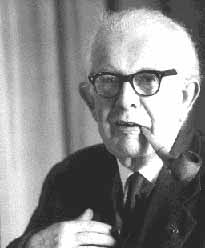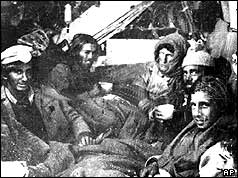Lessons Ignored
In 2004, the abusive treatments in the Abu Graib prison in Iraq were known to the public. The prison guards forced the Iraqi prisoners to perform things that were humiliating such as forming a human pyramid while being naked or shocking them with electricity. When a prison died because of the guards’ treatment, the guards faked the death’s papers. Some pictures of the tortures were even taken, with the guards smiling and looking content of what they were doing.
The American government was heavily criticized for letting something like this happen. They should have known better since there have been many findings on social psychology about human behaviors changing on the situation they were in and the evil things human are capable of.
The two famous examples of experiments social psychologists carried out to test whether humans change their behaviors according to the social environments they are in. The social environments being tested are usually when there is a person with authority presented. The experiments are:
1. Milgram’s experiment:
Volunteers were asked by a pretend-to-be authoritative psychologist to give electric shock to a person sitting behind a wall (which could not be seen but still could be heard) after the person answers questions wrong. The psychologist claimed that the experiment was to test whether punishments would increase memory.
The results were astonishing as more than half of the subjects gave a believed-to-be lethal volt of electric shock to the answerer (just because the psychologist asked them to). None of them walked over to see if the answerer was okay withouht asking the psychologist’s permission.
2. Zimbardo’s experiment:
College-students volunteers were randomly selected to be either prison guards or prisoners. One whole floor of the psychology department was set up to look like a prison with real uniforms and real procedures. The prisoners were to be in the cell for all times, but the guards had their own shifts. Before the two-weeks experiment, all volunteers were examined physically and psychologically.
Just after a couple of days, the college-students prison guards changed their attitudes; they started to treat their fellow students who were prisoners cruelly. The guards ordered the prisoners to do things that they would normally never asked them to do, and the prisoners started to get depressed and withdrawn. The situation got so intense that Zimbardo had to cancel the experiment after 6 days.
The American government was heavily criticized for letting something like this happen. They should have known better since there have been many findings on social psychology about human behaviors changing on the situation they were in and the evil things human are capable of.
The two famous examples of experiments social psychologists carried out to test whether humans change their behaviors according to the social environments they are in. The social environments being tested are usually when there is a person with authority presented. The experiments are:
1. Milgram’s experiment:
Volunteers were asked by a pretend-to-be authoritative psychologist to give electric shock to a person sitting behind a wall (which could not be seen but still could be heard) after the person answers questions wrong. The psychologist claimed that the experiment was to test whether punishments would increase memory.
The results were astonishing as more than half of the subjects gave a believed-to-be lethal volt of electric shock to the answerer (just because the psychologist asked them to). None of them walked over to see if the answerer was okay withouht asking the psychologist’s permission.
2. Zimbardo’s experiment:
College-students volunteers were randomly selected to be either prison guards or prisoners. One whole floor of the psychology department was set up to look like a prison with real uniforms and real procedures. The prisoners were to be in the cell for all times, but the guards had their own shifts. Before the two-weeks experiment, all volunteers were examined physically and psychologically.
Just after a couple of days, the college-students prison guards changed their attitudes; they started to treat their fellow students who were prisoners cruelly. The guards ordered the prisoners to do things that they would normally never asked them to do, and the prisoners started to get depressed and withdrawn. The situation got so intense that Zimbardo had to cancel the experiment after 6 days.







